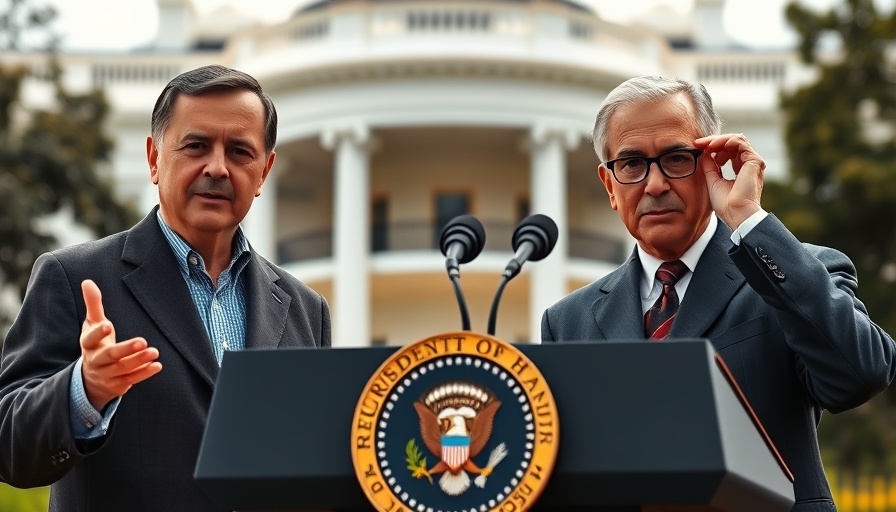
The Growing Debate on Interest Rates Amidst Political Pressure
As President Donald Trump openly calls for lower interest rates, the Federal Reserve finds itself at a crossroads, facing pressure from both political figures and market dynamics. Recently, Fed Governor Christopher Waller echoed Trump’s sentiments, declaring his belief that a rate cut is warranted. Such statements have stirred discussions in financial circles about the future of monetary policy, especially as inflation remains a pressing concern for consumers and businesses alike.
Market Reactions: A Tumultuous Landscape
Waller's dovish remarks sparked optimism at first, leading to a brief rise in stock market indexes. However, as the day unfolded, most gains were subsequently trimmed. The S&P 500 rose slightly by 0.08%, and the Dow Jones Industrial Average increased by 0.35%. This volatile market reaction illustrates the uncertainty investors face as questions surrounding rate cuts linger. With Fed fund futures indicating an 83% probability of no cut in July, market confidence remains shaky.
Trump’s Vision Versus Central Bank Independence
Trump's persistent criticism of the Federal Reserve and his desire to appoint a new chair further complicate the issue. His administration's stance reflects a broader tension between economic growth objectives and the need for political independence of the central bank. The possibility of Trump firing current Federal Reserve Chair Jerome Powell has also been a topic of discussion, raising concerns over potential political interference in monetary policy.
Historical Context: The Fed's Response to Economic Challenges
The Federal Reserve’s primary mandate includes price stability and maximum employment. Historically, the Fed has managed interest rates in response to economic signals. As we observed during the last financial crisis, the central bank implemented aggressive rate cuts to revive the economy. Currently, while Waller suggests a proactive approach, Powell insists that the current policy remains effective until substantial data emerges to justify a change.
Potential Trends for 2025: What Lies Ahead?
With predictions swirling about the economic landscape in 2025, it’s essential for business leaders to adapt their strategies according to potential regulatory changes. As Trump and other political figures (including Vice President JD Vance) challenge the status quo, small businesses and startups must monitor developments closely to seize opportunities or mitigate risks. Emerging entrepreneurs should stay informed about Fed decisions as they directly impact borrowing costs and economic growth.
Actionable Insights for Business Leaders
In navigating this uncertain environment, business owners can implement several strategies. Keeping a close watch on economic indicators such as inflation rates and employment data can inform better decision-making. Securing flexible financing options may provide agility in responding to shifts in interest rates. Additionally, understanding global trends can inform local approaches to business development and expansion.
Moving Forward: A Call to Action
As the discussion around interest rates continues, it is crucial for business leaders to be proactive. By understanding these economic nuances and adapting strategies accordingly, entrepreneurs can better position themselves for success. In this dynamic landscape, remaining informed is not just beneficial; it’s essential for sustainable growth. For ongoing updates and insights into market trends, explore dedicated resources and strategies tailored for today’s business environment.
 Add Row
Add Row  Add
Add 




Write A Comment